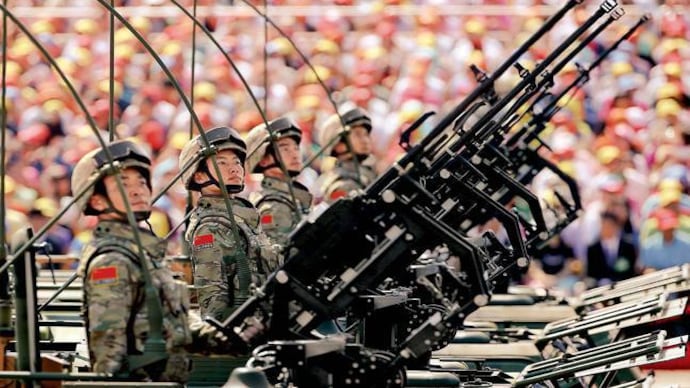Is China trying to win a war without fighting it? Dragon's tactics of warfare decoded
Is China trying to win a war without actually fighting one? Is it resorting to playing mind games? The Dragon has a history of using the 'Three Warfares' tactic to win battles. Here are the tactics decoded:

In Short
- In new act of transgression, China is encroaching upon sovereignty of Bhutan.
- China is now resorting to 'Three Warfares' tactic, popular as 'San Zhong Zhanfa'.
- The 'Three Warfares' tactics are based on 3 mutually reinforcing strategies.
China's three-pronged approach to hide its illegal activities and then justify them, all this for its hunger for land and resources and increasing its military might.
While there is still no resolve in the Indo-China Doklam standoff that erupted earlier last month, a new act of transgression by the Dragon has come to the fore - this time encroaching upon the sovereignty of Bhutan.
The Indian Army was informed by the Bhutan counterpart about the illegal road construction by the Chinese PLA by intruding upon the Bhutanese area so as to gain a strategically important location in Doklam area.
To China's consternation, India did not give in and stood firm to protect Bhutan's land, which China is dubbing as "unnecessary meddling by India in China-Bhutan relations".
Bhutan does not have an Ambassador posted in China and always communicates with the Dragon through the Indian Embassy. But having proclaimed itself as Big Brother in the region, India's stand of protecting Bhutanese land is sure to have angered and upset the Dragon.
With India not ready to listen, China is now resorting to its "Three Warfares" tactic, popular as "San Zhong Zhanfa" in China. This tactical approach is practised on the lines of mass (mis)information sharing so as to misguide and demoralise the opponent's defence forces and its population.
The Think Tank behind this unusal approach is the CMC - The China Military Commision. The CMC had first approved the use of such a move for the PLA - People's Liberation Army in 2003.
The 'Three Warfares' tactics are based on three mutually reinforcing strategies:
MEDIA WAR
Using Chinese Media to misguide their own public and shape international opinion about the present situation, by lying about how China's wrong stand is right, while at the same time garnering support of the international community, so as to justify if PLA takes any military action, China's acts should not be viewed as transgressions but rather as valid responses by the international community.
That is why China is bombarding the media with daily press briefings through its official media. China's nervousness is exhibited by regular and venomous threats by mouthpieces like Global Times and Xinhua.
PSYCHOLOGICAL WAR
With the audio-visual and photos released by Chinese media in the past few weeks of PLA war exercises, China is trying to create an impression that PLA is in such a position that it can assimilate the entire Indian Army in its Indo-China Border. This approach is to undermine Indian defence forces and their motto is to deter, and demoralise Indian military so that they are psychologically on a back foot. At the same time, the morale of the civilian population is also crushed. An example of this is China trying to remind India about the 1962 war while at the same time China says it will interfere in Jammu and Kashmir as well as liberate Sikkim.
LEGAL WAR
Talking on the Legal Warfare tactic, Lt Gen (retd) Shekatkar said that China's policy is that while dealing with its enemy on a land dispute, it will not leave the rival's area which China has intruded, instead it will demand more land from the enemy in the adjacent area, by bullying it. "This bullying strategy in practise by the Chinese is not only against India but all of its surrounding nations. Only this time it is Bhutan's turn to face the Dragon".
As far as Doklam is concerned, China can respond anywhere militarily, but the Indian government disapproving the Dragon's threatened act has behaved in a composed manner with a balance in military, diplomatic and political channels which the world has considered as a professional approach and this might have further rattled the Red Dragon.
And thus the Chinese have come up with the power of "Three Warfare Tactic" concept. China has designed it to do this to India and India's befitting reply to China should be a united stance as a whole, which means the ruling party, the Opposition, the media and the citizens need to come together to counter it effectively and swiftly.
ALSO READ | China may conduct military operation to expel India from Doklam, Chinese daily warns
ALSO READ | Doklam border standoff: Will there be an India-China war?
